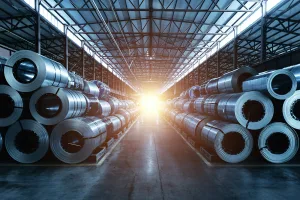Building Blocks of Strength: Unveiling the Fundamental Contrasts Between Steel and Concrete

What is the difference between steel and concrete?
In the realm of construction, two materials stand out as the backbone of modern architecture: steel and concrete. While both offer unparalleled strength and durability, delving into their nuances reveals a world of difference. Join us on a journey as we explore the fundamental disparities between steel and concrete, shedding light on their unique attributes and applications.
Understanding the Essence:
At their core, steel and concrete embody distinct principles of construction. Steel, forged from iron and carbon, boasts exceptional tensile strength, allowing it to flex under pressure without losing structural integrity. On the other hand, concrete, a composite material comprising cement, aggregates, and water, excels in compression, bearing heavy loads with ease.
Versatility Personified:
In terms of versatility, steel reigns supreme. Its malleability and ductility empower architects to create intricate designs and sprawling structures with unparalleled freedom. From towering skyscrapers to sleek bridges, steel’s adaptability knows no bounds. Conversely, concrete’s rigidity limits its application to primarily compression-based structures, such as dams, foundations, and pavements.
Battle of the Titans:
When it comes to durability, both materials showcase formidable resilience. Steel’s resistance to corrosion and fire renders it a stalwart choice for high-rise constructions and industrial facilities. Conversely, concrete’s longevity stems from its ability to withstand environmental elements and seismic forces, making it an ideal candidate for infrastructure projects in earthquake-prone regions.
Eco-Friendly Footprint:
In the era of sustainability, the ecological impact of construction materials cannot be overstated. While steel production necessitates significant energy consumption and emits greenhouse gases, its recyclability mitigates some of its environmental footprint. Conversely, concrete’s primary ingredient, cement, contributes to a substantial carbon footprint due to its manufacturing process. However, advancements in eco-friendly concrete formulations offer a glimmer of hope for a greener future.
Cost Considerations:
When weighing the cost-effectiveness of steel versus concrete, several factors come into play. While steel’s initial material costs may exceed those of concrete, its shorter construction time and ease of assembly often result in lower overall project expenses. Conversely, concrete’s affordability makes it a preferred choice for large-scale infrastructural projects where cost efficiency reigns supreme.
The Future Landscape:
As we peer into the future of construction, the synergy between steel and concrete emerges as a driving force behind architectural innovation. Hybrid structures that leverage the strengths of both materials promise to redefine the skyline, marrying steel’s flexibility with concrete’s durability to create sustainable, resilient edifices for generations to come.
In conclusion, the distinction between steel and concrete transcends mere materiality, embodying a dichotomy of strength, versatility, and sustainability. While each material possesses its own set of advantages and drawbacks, their harmonious integration represents the pinnacle of modern engineering prowess. As we navigate the ever-evolving landscape of construction, understanding the nuanced differences between steel and concrete remains paramount in shaping the cities of tomorrow.



